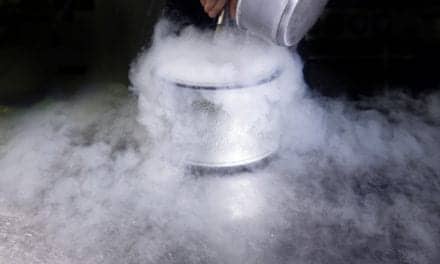July 31 — Asthma patients unknowingly may run out of lifesaving medication because their portable pressurized metered-dose inhalers (pMDIs) do not include an integrated dose counter according to an investigation published this month in Annals of Allergy, Asthma & Immunology, the scientific journal of the American College of Allergy, Asthma and Immunology (ACAAI).
“Because patients have no reliable way of tracking spent doses or knowing how much medicine remains inside the pMDI once they begin using it, we conducted the study to determine how patients know when their pMDIs are empty or how they know when it is time to refill their prescriptions,” said lead investigator Nancy Sander, founder and president of Allergy & Asthma Network Mothers of Asthmatics in Fairfax, Va. “Are they discarding the inhaler before it has been fully used, or are they continuing to use the inhaler beyond its labeled number of doses, in which case the quality of each puff is no longer guaranteed by the manufacturer?”
The pMDI is the cornerstone of asthma treatment: an economical and portable device containing a specified number of doses. But after the patient has used the labeled number of medicated doses, pMDI canisters may continue to deliver 20% to 80% more sprays containing little more than propellant with essentially no active medicine.
The study was conducted in April 2003 via a 6.5-minute telephone interview with a random sample of 500 US families with asthma. One fourth of the 342 respondents who named a bronchodilator as the medication they use when experiencing symptoms of wheezing, coughing or shortness of breath reported having found their pMDI empty during an asthma exacerbation. Of these 87 patients, authors noted that 71 considered their pMDI empty “when absolutely nothing came out.” Seven had to call 911.
“Another alarming finding was that only 36% of bronchodilator users reported ever having been told to keep track of pMDI doses used,” said co-author Bradley Chipps, MD, Capital Allergy & Respiratory Disease Center, Sacramento, Calif. “But without an integrated dose counter, there is no reliable way for patients to track medication usage.”
According to Sander and colleagues, the pMDI is the only medication delivery system approved by the Food and Drug Administration (FDA) that does not allow patients to reliably tell if they have medication left as they continue to use it.
“The methods patients currently use to determine whether medication remains in the pMDI are all faulty,” Sander said. These techniques include:
• Maintaining a diary – Authors describe the diary method of tracking inhaler use as cumbersome and “wholly impractical,” for patients using the medication on an intermittent bases as is the case with bronchodilators. Only 8 percent of survey respondents used this method to determine when to replace their pMDI.
• Spray testing – Although the method most commonly used, spray testing is ineffective because propellant remains in the device long after the medication runs out.
• Floating the canister – In the past, patients were taught to test the amount of medication remaining in the inhaler by floating its canister in water and noting its position. No study has determined if a general float test can be used to evaluate the number of medication doses remaining in any given pMDI canister. Many package inserts warn patients against immersing or floating the canister in water because this threatens product integrity.
“As discussed by Sander et al, no reliable method beyond counting doses is available for multidose inhaled medicines that are not equipped with dose counters,” noted guest editorial writer John Oppenheimer, M.D., of the University of Medicine and Dentistry of New Jersey. “Although floating pMDIs had been advocated in the past, several recent studies have demonstrated the lack of reliability and potential for valve obstruction as a result of this technique. Thus, the authors’ conclusion that manufacturers of inhaled medicines should include dose counters as a standard feature on every multidose inhaler device appears reasonable. Otherwise, our patients are left to question whether their inhaler device is ‘running on empty’.”
The Food and Drug Administration’s (FDA) ban on the use of ozone-depleting chlorofluorocarbons (CFCs) as a propellant for pMDIs by 2009 affords the opportunity for manufacturers to make product improvements in the switch to HFA replacements.
“When we took the dose counting issue to FDA in 2001, they agreed with our position and within six weeks issued a guidance document to industry stating that pMDIs of the future should include integrated dose counters. The first HFA pMDI with a dose counter was introduced this month and others are not far behind. We hope these advances will help reduce emergency department visits, hospitalizations, missed school and work days and death due to empty inhalers,” Sanders said.









